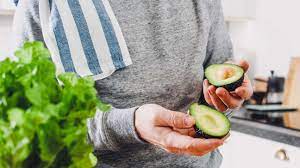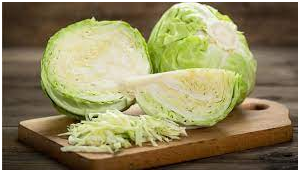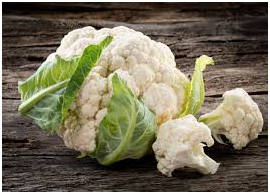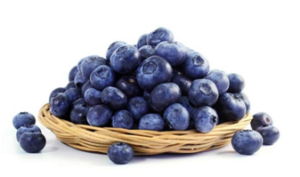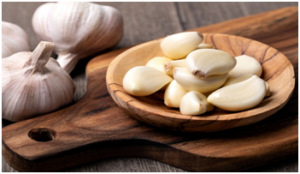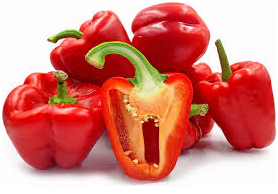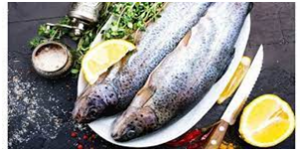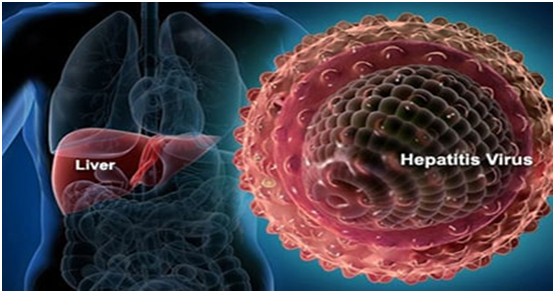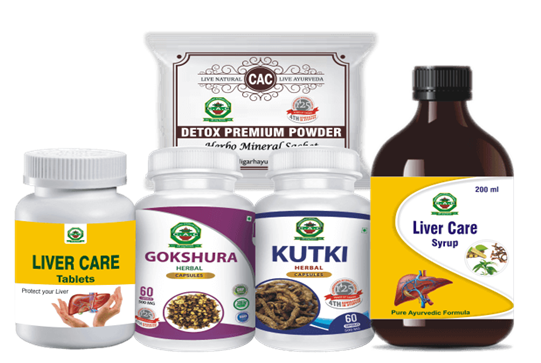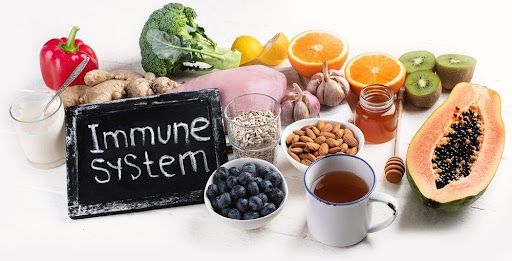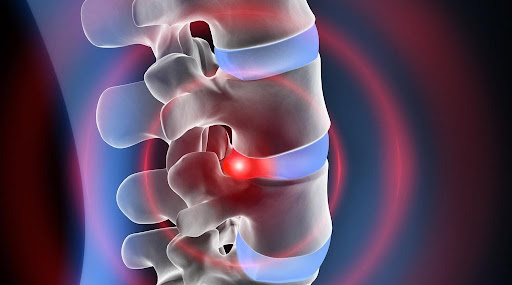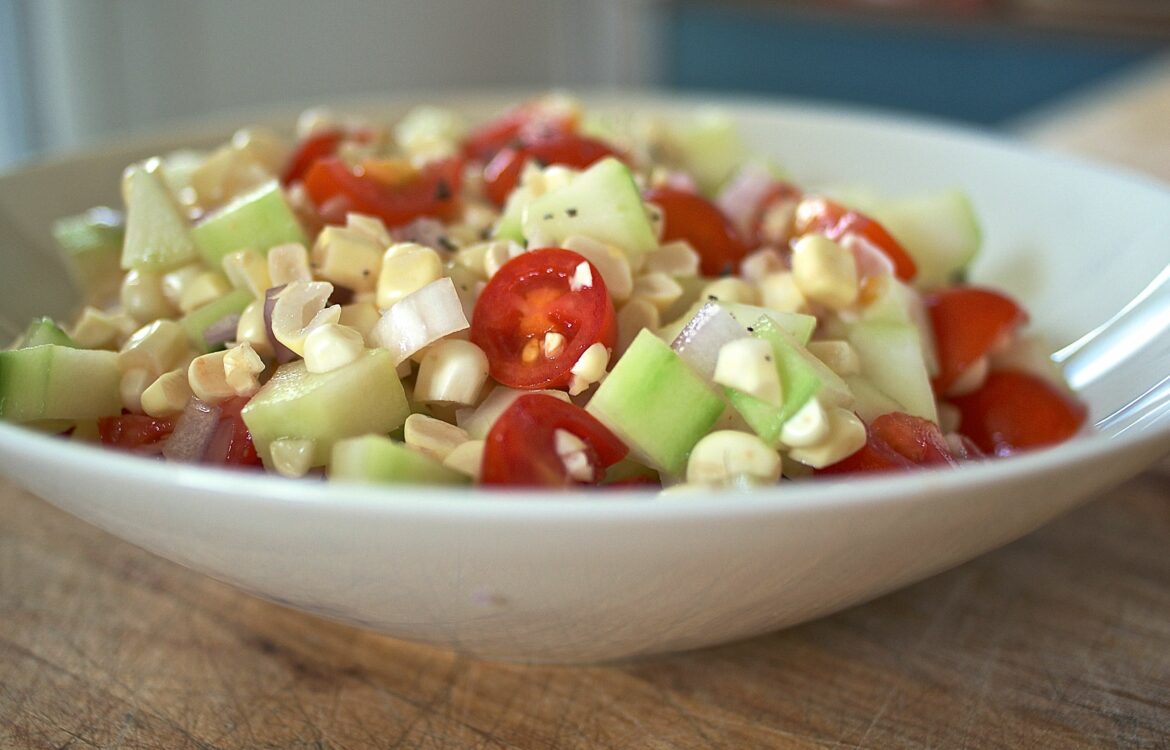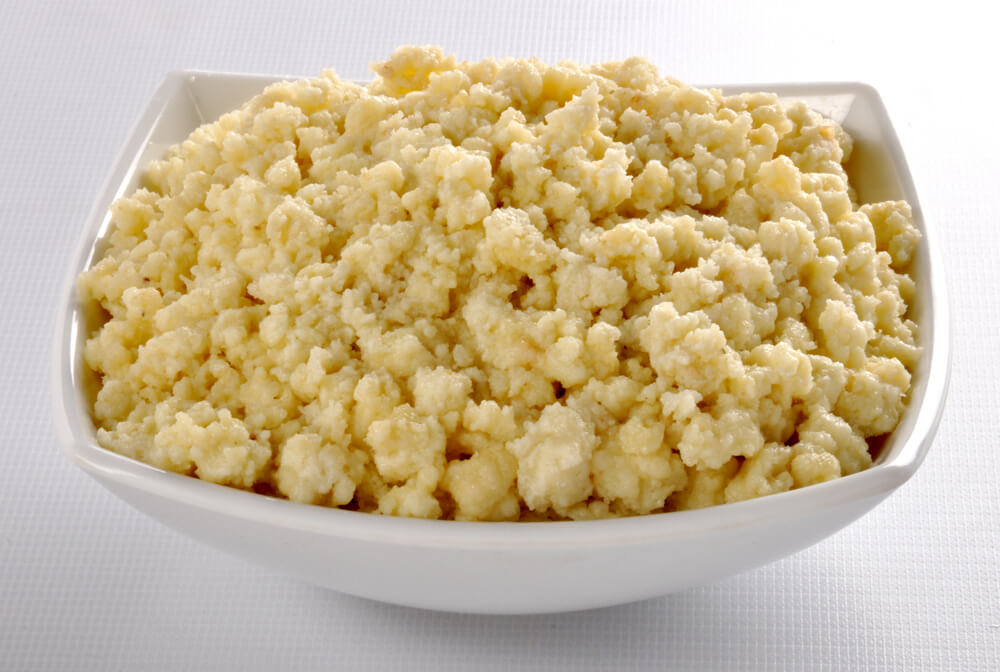Author Archives: Dr. Vaidya Karanvir Singh
How to Take care of Your Feet in Winters
- January 3, 2022
- Posted by Dr. Vaidya Karanvir Singh
- 0 Comment(s)
Winters not only bring with them seasonal problems like cold and cold, but also bring serious diseases to the hands and feet. Yes, with the decrease in temperature, there is a change in every system of the body, whose effect is visible on different organs. Today we are talking about foot disease in winter, which usually troubles many people. The biggest reason for the problems related to feet in winter is slowing down of blood circulation. Apart from this, carelessness related to people’s lifestyle and foot care also causes these diseases. So, let’s first know 5 common foot diseases in winter and then know how to take care of feet in winter?
Problems related to feet in winter -foot disease in winter
- Shrinkage of the skin of the feet due to cold – Trench Foot
Trench foot is a serious condition related to the feet, which occurs due to the feet being wet for a long time. In this, due to cold and wetness in the feet, especially the ankles, blisters occur and redness comes. In fact, with prolonged exposure to cold and wetness, your feet may lose their blood circulation and nerve function. Then there is a lack of oxygen and nutrients in the feet. In this, a person has gangrene in the feet, tissue and nerve damage and ulcers etc.
Ads by Jagran.TV
Symptoms of Trench Foot
Talking about the symptoms of trench foot, due to prolonged coldness of the feet, the skin tissues become lifeless and due to this coldness and numbness in the feet. Also, in this condition when you come in contact with heat or compress the feet with hot things, then there is severe pain in the feet. There is constant itching and intermittent tingling. These symptoms of trench foot may affect only one part of the foot. But in the most severe cases, they can spread to the entire foot, including your toes.
inside Plantar Fasciitis
Also read: Apart from the bones of the joints, these 5 organs of the body can also be damaged by rheumatoid arthritis, know the reason
2. Plantar Fasciitis -Plantar Fasciitis
In winter, foot pain in many people increases. This can be due to Plantar Fasciitis. Cold temperatures cause the tissues in your joints to stretch, leading to joint pain. Also, the inner layer of the calcanium gets swollen during the winter season. Due to this, as soon as we put our feet on the ground, we feel a sharp pain in our heels. Talking about its symptoms, in this
There is severe pain as soon as the person’s feet are placed on the ground.
Especially this pain occurs as soon as you get out of bed in the morning.
There is swelling in the heel.
Infection, such as redness and pain, occurs in the affected area.
insideChilbains
- Frost in the feet or cold – Chilbains
Chilbains are small sores caused by inflammation of blood vessels after exposure to cold air. These are often painful and affect the skin on your hands and feet. In fact, cold weather can cause the small blood vessels near the surface of your skin to constrict. Once you warm up, these sores tend to spread very quickly. Then it causes swelling in the tissue. The inflammation then irritates the nerves in the affected area, causing pain. Talking about its symptoms, then
Chilblains are patches of skin that appear swollen and red or sometimes blue in color.
Due to inflammation, the wounds start to glow.
– intense burning
-Blisters
-Itching
insidecoldfeet
4. Cold Feet
Cold feet are one of the body’s normal reactions to cold temperatures. When the body becomes cold, the blood vessels in the extremities such as the hands and feet constrict. This reduces blood flow to these areas, which reduces body heat. Over time this can lead to a lack of oxygen in the tissues due to a decrease in blood circulation, so that the cold area of the body turns blue. look at its symptoms,
– poor blood circulation in the legs
Red and swollen fingers
-Pain and itching
– Numbness of the feet.
Also read: Are you also troubled by lack of memory and concentration? Know from experts whether these are symptoms of ‘brain fog’
5. Foot Infections
Due to not taking proper care of feet in winters, fungal and bacterial infections can happen in your feet. Along with this, many people also get problems like eczema due to cold. In this, the skin of the feet becomes scaly and starts coming off. This problem is caused by bacteria. Also many people get ringworm, which also spreads. This is a ring-shaped fungal infection of the feet. In this, the skin of the feet becomes red and hard. Apart from all this, people also get fungal infection due to working in water for a long time. Talking about the symptoms of infection in the feet, then
In this case the nails turn red
There is itching along with swelling on the nail.
Due to having scaly skin, they become the cause of itching day and night.
Semi Super Food for Kidney Health
- January 3, 2022
- Posted by Dr. Vaidya Karanvir Singh
- 0 Comment(s)
Diet is incredibly significant for kidney health. What we eat can cause, prevent, or help ease up pain and symptoms. Nutritionist recommend a diet that is specific for kidney patients, but there are a few foods that are loaded with nutrition, inferior in potassium, delicious, and are amazing for everyone. Therefore, add on these foods in your daily diet.
CABBAGE (Brassica oleracea)
- Cabbages are abundant in phytochemicals, vitamin K, vitamin C and fiber.
- This cruciferous vegetable is filling and nutritious and also a rich source of vitamin B6 and iron.
- It’s a low cost and low potassium food for the kidney health.
- Uncooked cabbage makes amazing addition to the dialysis diet.
- Good in salads, soups, or even alone with just salt and pepper.
CAULIFLOWER (Brassica oleracea)
- This cruciferous vegetable is rich in vitamin C, folic acid and fiber.
- It aids the body elimination of toxins, because of this the perfect option for kidney patients
- Uncooked, boiled, or in soups, this super food tastes great.
BLUEBERRY (Vaccinium corymbosum)
- These sweet berries are low in potassium and rich in antioxidants, act as an anti-inflammatory food that just occurs to taste delicious.
- These are abundant source of vitamin C; manganese, calcium and fiber.
- They may also aid protect the brain from some of the effects of aging.
- Blueberries help slow bone breakdown in rats due to Antioxidants.
- Obtain blueberries fresh, frozen or dried, and enjoy them in cereal or topped with whipped topping, in a healthy fruit smoothie.
- We can also drink blueberry juice.
GARLIC (Allium sativum)
- This provides a delicious flavor as well as nutritious with anti-inflammatory properties.
- Garlic helps prevent plaque from forming on the teeth, able to reduce cholesterol and inflammation.
- Garlic powder is an excellent alternative for garlic salt in the dialysis diet.
RED PEPPERS (Capsicum annuum)
- Red peppers are low in potassium but have good flavor.
- Adding red peppers in your recipes can add flavor and nutrition.
RED GRAPES (Vitis Vinifera)
- Flavonoids, which give grapes their red pigmentation.
- These flavonoids help to lower the risk of blood clots.
- Red grapes help to reduce inflammation and promote renal and kidney health.
OLIVE OIL (Olea europaea)
- This may significantly lower the risk of developing kidney disease.
- Naturally high in oleic acid and polyphenols, both anti-inflammatory
- Extra virgin olive oil has long been considered a kidney friendly food.
- The olive oil has a protection against the effect of oxidative stress induced by oxidant agent.
STRAWBERRY (Fragaria ananassa)
- The red pigmentation in strawberries comes from a substance called anthocyanin.
- They are Low in potassium and good source of vitamin C, manganese, and fiber.
- Due to the presence of anthocyanins and ellagitannins strawberries are good for improving kidney functioning.
- Its antioxidant properties help in protecting the body from oxidative damage.
FISH
Abundant in Omega-3 fatty acids, fish are great source of protein that boosts your kidney and heart health.
What’s your favorite food with these ingredients in it? Tell us your favorite kidney friendly food.
Ayurvedic Treatment for Hepatitis
- January 3, 2022
- Posted by Dr. Vaidya Karanvir Singh
- 0 Comment(s)
About Hepatitis : Ayurvedic Treatment for Hepatitis
Ayurvedic Treatment for Hepatitis : Hepatitis, is an inflammatory condition of the liver, usually occur as a result of a viral infection. There are five main hepatitis viruses, known as to as types A, B, C, D and E, but it can also be caused due to toxins (particularly alcohol, certain drugs, some industrial organic solvents and plants), other infections and autoimmune diseases.
Hepatitis A and E are generally caused by ingestion of contaminated edible or water. Hepatitis B, C and D often caused by parenteral contact with infected body fluids.
Acute infection may occur with limited or no symptoms, or may include symptoms like the skin and eyes become yellow (jaundice), dark urine, nausea, vomiting, malaise or excessive fatigue, anorexia and stomach ache.
Cause of hepatitis
It can be caused by:
- Immune cells in the body attacking the liver and resulting autoimmune hepatitis
- Infections from viruses (like hepatitis A, B, or C), bacteria, or parasites
- Liver damage from alcohol, poisonous mushrooms, or other poisons
- Medications, such as an overdose of acetaminophen, which can be deadly
- Liver disease can also be caused by inherited disorders such as cystic fibrosis or hemochromatosis, a condition that involves taking too much iron (the excess iron deposits in the liver).
- Wilson’s disease.
Ayurvedic management for hepatitis
Single herbs
Here are some of the single ayurvedic herbs that helps to cope up Hepatitis:
KUTKI (Picrorhiza kurrooa)
- Kutki is famous as a liver tonic, due to its impressive results in liver diseases such as hepatitis, liver cirrhosis etc.
- It reduces fat content in the liver and also has anti-inflammatory property because of its compound called apocynin.
- This herb amplify digestive fire and cures other pita related diseases.
BHUMI AAMLA (Phyllanthus niruri)
- Bhumi amla shows liver protecting properties. Anti-inflammatory action prevent inflammation of liver.
- Improves appetite due to its deepana (ignite digestive fire) property. Balances kapha and pitta dosha.
KAALMEGH (Andrographis paniculata)
- Kaalmegh is having deepana property and expels out toxins from body acts as liver detoxifier.
- Balances liver enzyme functions, relieves inflammation and also balances pitta dosha.
GUDUCHI (Tinospora cordifolia)
- This herb is known to be emphatic drug for humans due to its anti-viral, anti –inflammatory and anti-oxidants property.
- It is very effective in treating hepatitis and also removes toxins from the body.
TRIPHALA:
- Triphala is a blend of three drugs aamla, hariktaki and bhibhitak is one of the very effective drug in treating fatty liver as it maintains liver enzyme function.
- Lowers high bad cholesterol levels in blood due to great anti –inflammatory and anti-oxidant properties.
- This herb acts as mild laxative as liver diseases are pitt dosha related disorders.
PITT PAPRA (Fumaria indica)
- This ayurvedic herb also beneficial in pitta disorders therefore used in liver disorders.
- It is effective in bleeding disorders due to its cold potency.
- External application of this herbal paste can relieve the itching and burning sensation.
GINGER (Zingiber officinale)
- This ancient ayurvedic herb helps in reducing fat in fatty liver and improves the action of liver enzymes.
- It has deepana (ignite digestive fire) and pachana (digestive stimulant) property therefore promotes healthy digestion.
- It lowers high cholesterol levels in blood.
- Helps in detoxification and prevent inflammation.
PANCHKARMA THERAPY
Panchakarma is a bio-cleansing method that removes toxins from the body. In case of hepatitis panchakarma’s virechana procedure is highly effective because it helps in balancing aggravated pitta dosha, ignites Agni (digestive fire) and detoxifies body.
Ayurvedic treatment for hepatitis by CAC
DETOX PREMIUM POWDER:
This powder made up of pure herb and minerals such as shukta pishti, moti pishti, guduchi satav, parwal pishti, jahar mohra pishti, akik pishti, gandhak rasayan, shwetparpati, sutshekhar ras, sudhyog tablet, yavakshaar and tal sindoor. Detox powder helps to lower extra fats from the liver & deal with the symptoms associated with hepatitis.
LIVER CARE TABLET;
The herbal ingredients used for the preparation of this tablet are Kutaki (Picrorhiza kurroa), Kalmegh (Andrographis paniculata), Bhumi amla ( phyllanthus niruri), Giloy(Tinopora Cordifolia), Yavakshar( Hordeum vulgare), Imli Kshar( Tamarindus indica), Mukta Shukta pisti etc. That provides better results in hepatitis. As these ingredients in combination remove extra fats from the liver, encourages appetite, decreases abdominal swelling and pain.
LIVER CARE SYRUP:
This herbal syrup aids in balancing aggravated Pitta dosha. It promotes regeneration of liver cells, boost functions of liver, and also encourages blood flow from the liver. Liver care syrup helps in the treatment of hepatitis, fatty liver, hepatomegaly, liver cirrhosis, and obstructive Jaundice. This syrup made up of natural ayurvedic herbs sech as Kalmegh (Andrographis paniculata), Imli Kshar( Tamarindus indica), Bhumi amla( phyllanthus niruri), Giloy (Tinopora Cordifolia), Kutaki (Picrorhiza kurroa), Yavakshar (Hordeum vulgare) and Mukta Shukta pisti etc.
GOKSHURA CAPSULES:
Gokshura is an ayurvedic herb that aids in revitalizing and rejuvenating the body. This herb helps to balance all three Doshas. These capsules made up from extract of the Gokshura herb. It shows Antioxidant, Anti-inflammatory, Diuretic, anti-gout, Anti-arthritic, Anti-gout, Anti-hypertensive, Immune-modulator properties. This capsule is beneficial for promoting Kidney functions, treats Urinary tract infections, urinary distension, urinary calculi, Polycystic kidney disease, Renal calculi, dysuria, difficulty in micturition, cystitis, maintain uric acid levels in the kidneys and thus prevents Gout.
KUTKI CAPSULES:
Kutki herb has a cooling action, used to manage bleeding disorders such as nasal bleeds, menstrual problems, etc. Kutki capsules contains pure herbal extract of Kutki herb whose main function is to balance Vata and pitta doshas. It helps in the removal of harmful toxins from the body.
DIET MANAGEMENT FOR HEPATITIS
- Oily and heavy foods should be avoided
- Limits junk food items
- Fresh fruits such as apple, bananas, cherries, oranges etc. should be added in regular diet
- Include fresh vegetables such as carrot, broccoli, cucumber and tomatoes in your diet.
- Limit extreme sugar content such as pastries, cakes, ice creams, soft drinks, etc.
- Drink lots of water and coconut water.
- Cut down excessive caffeine
- Limits alcohol and smoking
- Limits spices and salty food items in your diet.
- Add healthy spices such as dhaniya, fennel, cinnamon, cumin and hingu.
- Consume herbal tea twice a day.
- Take Amla to enhance your immunity.
- well-cooked and warm food should be consumed
Following this kind of diet regimen will definitely help in body detoxification and also will maintain Agni state and immune system.
DAILY SKIN CARE ROUTINE
- December 31, 2021
- Posted by Dr. Vaidya Karanvir Singh
- 0 Comment(s)
HOW TO DETERMINE SKIN TYPE
Before start following a skincare routine it is important to determine your skin type. If people confused about their skin type here is a simple way to determine it:
- Normal Skin –
This type skin feels balanced.
It is neither too oily nor too dry.
It is also not excessively sensitive and does not react to anything applied to it. - Oily Skin –
If people have shiny and greasy T-zone then they have oily skin.
Oily skin have larger sebaceous glands that produce excess oil.
It is also acne-prone. - Dry Skin –
If skin feels tight and itchy especially after washing face then people have dry skin.
This type of skin feels patchy and itchy.
It is also prone to premature aging. - Combination Skin –
If T-zone area of face or cheeks is oily and rest of the face are dry then people have combination skin. - Sensitive Skin –
If skin reacts to any product and gets irritated easily especially after sun exposure then people have sensitive skin.
SKIN CARE ROUTINE FOR NORMAL SKIN
Normal skin is balanced skin and does not have issues like other skin types. The aim of skincare routine should be not to upset the balance.
FOR MORNING
- Cleansing –
- Cleanse your skin with a gentle sulfate-free cleanser.
- Sulfate-free cleansers do not dry out the skin
- Do great job of getting rid of any excess oil that may have settled into skin pores.
- Toning –
- Avoid toners that contain alcohol.
- These products are not only extremely harsh on skin, but they also dehydrate it and lead to dryness.
- Use toners with natural ingredients such as rosewater and any other hydrating ingredient such as hyaluronic acid.
- Moisturizing –
- Use moisturizer with SPF 30+ will help to hydrate skin and protecting skin from the sun.
- Use moisture whose SPF value of 30 or more.
- Choose products that are non-comedogenic.
- Sunscreen –
- Moisturizer contains SPF but do not forget to apply sunscreen.
- Use sunscreen that has at least SPF 30 and PA + rating.
- This ensures skin is protected from both UVA and UVB rays.
FOR NIGHT
- Cleansing –
- Use the same cleanser that use in the morning.
- Cleansing help to remove all the dirt, makeup, and dust from face
- Using cleansing oil and then use the other cleanser to wash face.
- Toning –
- Tone your face with toner
- toner help to keep skin hydrate
- Use same toner used in morning.
- Serum –
- Use an antioxidant-rich serum to provide additional nourishment to skin.
- Check for ingredients like algae extracts, resveratrol, and vitamin C that keep skin healthy and shiny.
- Eye Cream –
- Apply eye cream that is specific for issues such as dark circles or puffy eyes.
- Moisturizing –
- Go for a moisturizer with a creamy formula to provide deep nourishment to skin.
ADDITIONAL TREATMENTS
- People may exfoliate skin with glycolic acid serum.
- Glycolic acid is gentle on skin and deeply penetrate skin.
- It dissolves and sloughs off dead skin cells and leaving skin brighter and feeling smoother.
HOME REMEDIES TO TRY
- People may apply yogurt to skin.
- They can take yogurt for oral consumption and for topical beneficial for the skin and helps to keep skin healthy.
SKIN CARE ROUTINE FOR OILY SKIN
- Oily skin produce excess sebum.
- The daily skincare routine should minimize oil and maintaining hydration levels.
FOR MORNING
- Cleansing –
- Oil-free cleansing gels or foams.
- Prefer sulfate-free products as these will control oiliness while cutting the risk of skin drying.
- Scrubbing –
- Use mild scrub to cleanse the skin pores.
- Oily skin is prone to whiteheads, blackheads, and clogged skin pores, and scrubbing ensures that skin is cleaned properly.
- Avoid using a harsh scrubber.
- People may use gentle exfoliates thrice a week.
- Toning –
- Alcohol-Free toner with ingredients like sodium PCA, witch hazel, or geranium is the way to go dealing with oily skin.
- These astringent ingredients clean skin and refine skin pores without damaging or dehydrating your skin.
- Moisturizing –
- Moisturizing is crucial for oily skin types.
- Dehydrated skin can kick sebaceous glands into overdrive, leaving skin in a worse condition than before.
- Look for oil-free moisturizers.
- Water-based lotions are good option for oily skin.
- These products feel light on skin, keep skin hydrated, and leave it with a matte finish.
- If people have extremely oily skin then they can choose to invest in a good hydrating gel.
- Sunscreen –
- Sunscreen may not seem appealing if you have oily skin this is because people probably have not been using the right products.
- Sunscreens with zinc oxide can make a world of difference to skincare routine.
- These products leave skin with a matte finish while also preventing breakouts.
FOR NIGHT
- Cleansing –
- Apply same cleanser that people use in the morning.
- Toning –
- Tone your face with the same toner use for your morning routine.
- Serum (AHA/BHA) –
- Oily skin people has usually large pores
- AHA/BHA serums help to minimize the skin pores.
- If people have acne-prone skin, look for ingredients like tea tree oil and salicylic acid.
- Serum (Retinol) –
- Use serum with retinol.
- This serum is beneficial for oily skin
- Helps to minimize the appearance of pores with continued use.
- Night Cream –
- People may use a water-based, oil-free, and non-cosmetogenic night cream,
- A water-based moisturizer is ideal for oily skin.
ADDITIONAL TREATMENTS
- Use face oils and clay masks as additional treatments for oil control and keeping skin healthy.
- Clay masks help absorb excess oil and keep skin clear while face oils provide additional moisturization.
HOME REMEDIES TO TRY
- Use clay masks once or twice a week.
- Pick any clay-like Multani mitti or Bentonite clay.
- Make a paste using water or rosewater and apply it to skin.
- People may also use lemon juice diluted with water on skin once in a while.
- It contains vitamin C that helps reduce UV-induced skin damage such as photo aging and dark spots/pigmentation issues.
SKIN CARE ROUTINE FOR DRY SKIN
the skincare routine for dry skin focus on hydration.
FOR MORNING
- Cleansing –
- Use mild cleanser that does not form foam or lathe.
- It is gentle on skin and gets rid of dirt without stripping it of moisture.
- Toning –
- Look for extremely mild ingredients in toner.
- Toners with ingredients like cucumber and aloe Vera help to clean face while keeping it hydrated.
- Serum –
- An antioxidant rich serum will reinforce skin defense.
- It also helps curb collagen breakdown.
- Use vitamins A, C, and E rich serum.
- Moisturizing –
- A moisturizer gives skin the hydration it needs.
- Pick a moisturizer that has a thick consistency and contains hydrating ingredients such as dimethicone, ceramides, and glycerin.
- Use oil-free and non-comedogenic moisture.
- Sunscreen –
- Choose sunscreen that has a serum-like formula.
- The rule of sun protection remains the same use SPF 30 and PA+ rating.
FOR NIGHT
- Cleansing –
- Use the same cleanser that use in the morning.
- Toning –
- Tone face with the same toner that use for your morning routine.
- Serum –
- A retinol serum will penetrate skin and slough off dead skin cells
- All while revealing a healthier layer of skin.
- It will also help to prevent the formation of fine lines.
- Eye Cream –
- Since dry skin is prone to aging and fine lines using an eye cream can keep skin looking youthful and healthy for a long time.
- Use eye cream that contains peptides help in boost collagen activity
- Improving skin cell turnover.
- Moisturizing –
- Apply night cream with a high hydrating value.
- Moisturizers that contain sweet almond oil, jojoba oil, cranberry oil, phospholipids, borage oil, or rosehip seed oil are good options as
They act as the natural lipids in skin.
JUICES IN WINTERS
- December 30, 2021
- Posted by Dr. Vaidya Karanvir Singh
- 0 Comment(s)
OVERVIEW:-
- In the winter months, most of the peoples infected with cold and flu, seasonal health disorders, itchy skin conditions and infections due to lowered immunity.
- So, during winter season, we need an active immune system and high metabolism rate to fight diseases. And, the one thing we can do for our body is to eat a diet rich in vegetables and fruits.
- Drink juice which are rich in fibre, and help to fight heart diseases and other chronic illness.
- So, intake fresh juices, becomes more important as they are packed with vitamins, minerals, antioxidants which are easily eliminated by bodies.
JUICES USED IN WINTERS:-
1.) Beetroot-Carrot-Apple Juice:-
The fresh winter-special beetroot and carrots are combined with sweet apples to make this powerful immunity booster.
2.) Warm Apple And Kinnu Winter Punch:-
This juice made with orange, apple and pineapple fruit is just perfect. To make tasty cinnamon, nutmeg, lemon and cloves are also added and for sweetness of honey. It develops healthy immune system
3.) Samba:-
Ginger, cinnamon ,orange juice, apple juice, honey and lemon add all these ingridents. It help to rejuvenate the body.
4.) Beetroot and pomegranate juice:-
This juice is very beneficial foe anemeic patients. Beetroot and pomegranate are combined with aloe vera, and with black pepper powder to make warm effect in winters
5.) Orange And Basil Juice:-
Tangy and juicy orange is the highlight of winter produce. Add fresh basil leaves to it and for sweetness add some honey – a vitamin C-rich drink for good health .It boost metabolism.
6.) Orange And Carrot Juice:-
Fresh orange and winter-special red carrots, when mixed together produce a good flavour. It reduce the risk of heart disease.
7.) Cucumber, Kale And Spinach Juice:-
It is an appetising drink along with some refreshing cucumber and healthy ginger. It also beneficial in lower blood pressure and blood suger.
8.) Strawberry and kiwi juice:-
Strawberries and kiwis are vit-C rich fruits.It improve the bone strength.It help to permotes healthy blood circulation.
It reduce the risk of respiratory infections like pneumonia or the flu.
BENEFITS OF JUICES :-
Several types of benefits of juices. These includes:-
- Digestion, purifies the blood, rids the body of toxins, reduces inflammation in the joints, and fights free-radicals (vitamin C means goodbye colds and flu!). Ginger root soothes the intestinal tract (great for nausea!), boosts immunity, and protects against cancer.
- Juices improves circulation, detoxifies the blood, and reduces inflammation in the body.
- The earthy taste in this juice comes from the roots red beet, carrot, and celery. It activates digestion, flushes the kidneys, and lowers blood pressure!
- The crunchy chia seeds make this tangy drink fun. This antioxidant-rich juice is great for anti-aging and maintaining blood-glucose and cholesterol levels
VEGETABLES JUICE IN WINTERS:-
Following vegetables used for making juice in winters:-
- CARROT
- CUCUMBER
- CABBAGE
- PUMPKIN
- SPINACH
- BOTTLE-GOURD
- GINGER
Freshly squeezed juices provide large quantity of water to body. It give all the nutrient to body protect body to other medical illness.
JUICES FOR GLOWING SKIN:-
Many juices beneficial for glowing skin. These includes:-
- Beetroot juice
- Carrot juice
- Spinach juice
- Amla juice
- Orange juice
- Aloe-vera juive
- Cucumber juice
- Pomegranate juice
TOP 10 winter Super foods to keep your Immunity strong
- December 30, 2021
- Posted by Dr. Vaidya Karanvir Singh
- 0 Comment(s)
- A strong immune system is important for all of us especially in this pandemic era where chances of infection are high. In winter seasons it become more important to boost immunity as there are more chances of allergy, flu-infections like cough, cold etc. Person with strong immunity can fight various kinds of infections which we face in day to day life.
- Eating a well-balanced and healthy diet surely helps to support and strengthen the immune system as well as help with overall energy levels. Many Vitamins like A, C, D and E, zinc and omega 3 fatty acids are helpful to strengthen immune system.
Some important facts
- Vitamin A plays important role in boosting immune function, regulating the cellular functioning and immune response.
- Vitamin C is helpful for the antibodies formation in the immune system. Studies show that Vitamin C deficiencies may impair immunity, while extra doses can reduce the duration of sickness.
- Vitamin D is a fat-soluble nutrient that is important for the growth and proper functioning of immune system. Mostly people are deficient in Vitamin D, especially in the winter months, it become more important to take Vitamin D food sources in your diet or consider supplementation. Low Vitamin D level can increased risk of upper respiratory tract infections.
- Vitamin E acts as natural antioxidant agent that helps to fight free radicals and inflammation in the body. Vitamin E also helpful in the formation of red blood cells and is important in the overall immune system and response.
- Omega 3 Fatty Acids helps to reduce inflammation in the body they are helpful to improve immune function.
- Zinc helps to support the immune system by reducing chronic inflammation that can be damaging. Zinc also helpful to fight against several infections and healing of wounds by aiding white blood cells production.
Immunity boosting Winter Foods
Taking foods that are high in these nutrients can help to increase your immunity naturally and enhance overall health. So you can include these winter foods into your diet to strengthen immunity, you must go for it. These foods include
Sweet Potatoes
Sweet potatoes contain both Vitamins A and C in high quantity. Including one medium sized sweet potato helps to meet your daily requirement of Vitamin A and also provides other nutrients like manganese, potassium, B Vitamins, various antioxidants, and over 50% of your daily Vitamin C needs.
Beets
Beets are very good source of carbohydrates and provide Vitamin C also and immune supporting nutrients like B vitamins, folate and iron. Beets also contain nitrates in good amount, which improve oxygen consumption and energy production in cells. These can be used by adding to your salad, or throwing some beets in your pre-run smoothie.
Broccoli
Taking raw broccoli have high amount of bioavailable Vitamin C while cooked broccoli is source for Vitamin A. Broccoli contains vitamins A, C and E in high quantity. You can have broccoli in your fry meals, salads or as vegetable.
Squash
There are many varieties of winter squash that are available like Butternut, acorn and spaghetti squash are rich sources of antioxidants like alpha-carotene and beta-carotene, Vitamins like A, C, B6, fiber, manganese, potassium and many more.
Eggs
Eggs are very good source of protein and many other micronutrients. When it is taken with the yolk, eggs offer Vitamins A, D and zinc. Eggs can be taken any time in a day. Eggs are also a great dietary source of leucine that helps in growth of muscles and their repair.
Leafy Greens
Dark green vegetables like spinach, kale and arugula are good for your health. Leafy green vegetables have high amount of Vitamins A, C and several antioxidants also which help to reduce inflammataion naturally .
Fatty Fish
Fishes are excellent sources of the omega-3 fatty acids, DHA and that help to reduce inflammation and activate certain immune cells. Fatty fish are natural sources of zinc, selenium and Vitamin D.
Citrus Fruits
Citrus fruits like oranges and grapefruits are high in vitamin C content. Orange juice can also be a great, quick acting to hydrate your body. Juices of fruits or adding them into your salads can help to make healthy diet
Raw Honey
Honey is source of many antioxidants and antibacterial compounds. These compounds help to stimulate immune cells and fight with allergies. You can consume honey by taking it in your morning bowl of oatmeal or yogurt, or you can also use it to make a delicious salad dressing.
Pumpkin Seeds
These are good source of Vitamin E and magnesium content, pumpkin seeds also contain omega 3 fatty acids and zinc. Pumpkin seeds can be taken as snack, or used as topping for salads, oatmeal or yogurt parfaits.
Beside this many other healthy lifestyle habits and activities will also be very beneficial in improve overall health. Staying hydrated, taking good quality of sleep, doing exercise are other important parts of the immunity boosting. These will help to keep your brain relax, repair muscles, and boost immunity naturally.
Immuno boosting Herbal products
Chandigarh Ayurved Centre made “Immune-Booster Kit” which has proven the result to enhance immunity naturally. Our kit is made up of purely herbal ingredients that are free from any kind of side effects. This is effectively used to treat low immunity.
Description of medicines
Detox Juice
Detox juice is a nutritious juice that is extracted from berries and is a powerful cleanser of the blood. The juice contains many natural nutrients that increase the immunity of a person and prevent it from occurring any kind of disease. Regular intake of detox juice will improve the stamina, & strength of the individual.
Amrit tulsi ras
Amrit tulsi ras is Holy basil (Ocimum sanctum) or tulsi is a powerful herb that has been used in Ayurveda. It was believed that the holy basil leaves had potent powers to flush out toxins from the body.
Immuno Boster Tablet
It is a pure herbal combination that helps to build up immunity. It consists of effective levels of antioxidants. vitamin C and E circulate in the body to protect it against the damage caused by free radicals. It has natural immunity-boosting properties to prevent and ease cough, cold, headache, and infections. it provides quick relief from early signs of running nose, itching throat, body ache, and weakness.
Giloy Capsules
Giloy Capsules are herbo mineral and purely ayurvedic formulation. It can be used in the form of capsules, juice and powder. But CAC capsules are highly effiecient as they contain required amount of Giloy in them and are 100% natural and safe. It is one of the best Rasayan of ayurveda that help Rejuvinate your body in all aspects.
How to treat Herniated disc in Ayurveda?
- December 30, 2021
- Posted by Dr. Vaidya Karanvir Singh
- 0 Comment(s)
What is Herniated disc?
- A slipped or herniated disc refers to rupture or damage of the intervertebral disc due to any kind of pressure from the vertebra above and below it. These intervertebral discs acts as protective cushion like pads present between the vertebrae and act as shock absorbers. The most commonly found symptoms of herniated disc include pain, numbness and tingling in the affected area.
- Slipped disc usually occurs in the lumber (lower back) regions, but it may also affect the neck (cervical) and upper back (thoracic region )
What are the Symptoms of a Herniated disc?
Most common symptoms of herniated disc that are noticed among individuals include
- Pain and numbness on the affected area of the body
- Pain may be radiating in nature and may extends to your arms or legs
- Pain that worsens after standing or sitting
- Pain can aggravate at night or while doing certain movements or activities.
- Unexplained muscle weakness
- Tingling sensation, aching, or burning sensations in the affected area
Causes of Herniated disc
Factors which may play a role in causing herniated disc include
- Age – With increased age, the outer ring becomes weak or torn and allows the inner portion to slip out that because of herniated disc.
- Weight lifting– Lifting a very heavy object can put great strain on the lower back, resulting in a slipped disc.
- Overweight– Individuals having more weight are at increased risk for a herniated disc because their discs have to support the additional weight of the body.
- Injury– Any kind of injury that involves spine can lead to herniated disc.
Diagnosis of Herniated disc
Doctor can examine the condition by doing physical examination. Your doctor will take your medical history and ask about your symptoms.
Imaging tests can be helpful to view the bones and muscles of your spine and identify any damaged areas. Examples of imaging scans include:
- X-rays
- CT scans
- MRI scans
Treatment of Herniated disc
- In modern science, treatment can be done through medications or in more severe cases surgery is done.
- Medicines that are used to give symptomatic relief that include
- Pain relievers – like non-steroidal anti- inflammatory drugs
- Nerve tonics
Ayurvedic View of herniated disc
- The most common cause that leads to slipped disc is wear and tear due to increased age. Very rarely, it `occurs due to an injury to the backbone and intervertebral discs.
- As per Ayurveda ,with increased age, there is aggravation of vata occurs, that reduced the quality of body tissues, leads to degeneration of tissues and various other vata disorders. Ayurvedic remedies for slipped disc primarily focus on balancing this aggravated dosha and healing of the body tissues.
Ayurvedic Treatment for Herniated disc
- In Ayurveda treatment is done with the help of panchakarma procedures as well as with medicines.
- Panchkarma procedure involves many procedure like Abhyanaga (local massage) , Swedana ( Steaming), basti (enema ). And other procedures that depends upon the area affected like kati basti , greeva basti etc.
- Snehana & Swedana – These therapies involves the use of medicated oils or decoction through different procedures that widens the channels of body, liquefies ama (toxins) from tissues and mobilises it to the digestive tract. This toxins is then expelled out of the body using panchakarma therapies.
- Snehana & Swedana are considered as best to treat the aggravated vata dosha that relieves the heaviness, stiffness and is used as the main treatment for numerous disorders which makes it an effective therapy for the treatment of slipped disc. This procedure is helpful to reduce the pain and other symptoms related to the disease.
- Abhyanga (oil massage) is one of the commonly used treatments that balances the vitiated vata and strengthens bones, tissues and ligaments. It reduces the pain and enhances the natural healing power of the body
- Basti involves insertion of medicated oil or decoction through the rectal route. That helps in reduction of vata dosha from the root.
Ayurvedic herbs for slipped disc
There are many ayurvedic herbs that are effectively used to improve the overall strength of body. These herbs include
- Shunthi
- Rasna
- Turmeric
- Guduchi
- Guggulu
- Dashmool Dravya
These are the commonly used ayurvedic herbs in herniated disc. These herbs have anti-inflammatory, analgesic, nervine stimulant effect.
Dietary and lifestyle changes for slipped disc patient
Do’s
- Perform breathing and relaxation exercises including yoga asanas like bhujangasana cobra pose), ushtrasana (camel pose) and setu bandhasana (bridge pose).
- Include meditation in your daily schedule.
- Maintain a proper posture while sitting or sleeping and take warm water baths.
Don’ts
- Do not take heavy meals, that are difficult to digest.
- Avoid a sedentary lifestyle.
- Avoid any kind of physical exertion after eating meals.
- Avoid overeating and excessive exposure to cold temperatures.
- Avoid eating chilled foods and cold drinks.
Ayurvedic treatment at Chandigarh Ayurved Centre
- In Modern science, use of medicinal as well as surgical treatment may not give permanent treatment but in Ayurveda you can get the permanent cure from this condition of herniated disc. So you should start treatment with Ayurveda where natural herbs are used that will deal with the root cause of disease.
- Chandigarh Ayurved Centre provides Combination of medications as well as panchakarma procedures for the natural and safe treatment of herniated disc.
Medications that are used to treat herniated disc include
- Back care tablets
- Nerve Up Tablets
- Pain O Kill Tablets
- Pain O Kill Oil
- Panchaskara Churna
- Vata Balance Tablets
Why Choose CAC for treatment?
- Chandigarh Ayurved Centre is providing healthcare services from since 131 years of experience with fourth generation in the field of Ayurveda. Chandigarh Ayurved Centre provides you the most trust worthy services and has the best quality of products. We assure you to provide the best Ayurvedic and panchakarma treatment.
For more details you can visit our website
www.chandigarhayurvedcentre.com
HOW TO MAKE CUCUMBER TOMATO CORN PEANUT SALAD WITH LEMON RECIPE
- December 30, 2021
- Posted by Dr. Vaidya Karanvir Singh
- 0 Comment(s)
DESCRIPTION
- Cucumber Tomato Corn Peanut Salad with Lemon is a quickly tossed Salad recipe people can make this in kitchen without cooking.
- This salad contain all freshly chopped vegetables the nutrients also will remain intact.
- The salad will go well with any kind of main courses such as chapatti, curry, sabzi or even with plain rice and dal.
INGREDIENTS
- 1 Cucumber (chopped)
- 1 Tomato (chopped)
- 1 Onion (chopped)
- 1/2 cup Sweet corn, boiled
- 1 Green Chili (chopped)
- 2 tablespoons Roasted Peanuts
- 1 Lemon juice
- Salt
- 2 sprig Coriander (Dhania) Leaves (chopped)
METHOD OF PREPRATION
- To making the Cucumber Tomato Corn Peanut Salad with Lemon Recipe, firstly will chop all the vegetables and keep it ready.
- Heat a sauce pan on medium heat, add the corn along with 1/2 a cup of water boil for 6-8 minutes.
- Off flame, drain water and set the corn aside for time.
- Take cucumber, tomato, onion, corn, green chili, peanuts in a bowl and mix well.
- Then add lemon juice, sprinkle salt and add coriander leaves to the mixture.
- Sprinkle toasted and crushed peanuts and serve.
BENEFITS OF INGRIDENTS PRESENT IN THIS RECIPE
CUCUMBER
- High in Nutrients.
- Cucumbers are low in calories high in vitamins and minerals
- Contains Antioxidants
- Promotes Hydration
- It May Aid in Weight Loss
- Lower Blood Sugar
- Promote Regularity
- Easy to Add in Diet.
PEANUTS
nutritional value
- Calories: 567
- Water: 7%
- Protein: 25.8 grams
- Carbs: 16.1 grams
- Sugar: 4.7 grams
- Fiber: 8.5 grams
- Fat: 49.2 grams
- Saturated: 6.28 grams
- Monounsaturated: 24.43 grams
- Polyunsaturated: 15.56 grams
- Omega-3: 0 grams
- Omega-6: 15.56 grams
- Trans: 0 grams
- Peanuts Are an Excellent Source of Biotin
- May Promote Heart Health
- May Aid Blood Sugar Control
- May Treat Erectile Dysfunction
- May Reduce Cancer Risk
- Contain Same Antioxidants as Red Wine
- Peanuts May Protect against Gallstones
- Peanuts Contain Copper
- Aids in weight loss
- Help to build muscles
- Boost immunity
- Prevent ageing.
TOMATO
Nutrition facts
- Calories: 18
- Water: 95%
- Protein: 0.9 grams
- Carbs: 3.9 grams
- Sugar: 2.6 grams
- Fiber: 1.2 grams
- Fat: 0.2 grams
- Tomatoes are a great source of vitamins
- They protect heart health
- Improve vision
- Boost digestive health
- Help with diabetes management
- Good for the Skin and Hair
- It’s Anti-Carcinogenic
- Good for Bones
- Repairs Damages from Smoking
- It is a Great Anti-Oxidant
- Activates Digestion
- Built Immunity
- Helps to Burn Fat
- Tomatoes are good for kidneys.
CORN
Corn Nutrition value
- Calories: 90
- Protein: 3 grams (g)
- Fat: 1 g
- Carbohydrates: 19 g
- Fiber: 1 g
- Sugars: 5 g
- Vitamin C: 3.6 milligrams (mg)
- Corn is rich in vitamin C, an antioxidant that helps protect your cells from damage
- The fiber in corn helps you stay full for longer between meals
- Feeds healthy bacteria in digestive tract which protect against colon cancer.
- Prevent diverticulitis
- Corn also has smaller amounts of vitamins B, E, and K, along with minerals like magnesium and potassium
- Corn’s packs whole-grain perks
- It is full of key nutrients
- provides protective antioxidants
- Good for digestion
- Prevents hemorrhoid
- Promotes growth
- Helps in gaining weight
- Provides minerals
- Prevents anemia
- Protects your heart
- Prevents cancer
- It is good for the eyes and skin
- It has cosmetic uses
KHOYA RECIPE
- December 30, 2021
- Posted by Dr. Vaidya Karanvir Singh
- 0 Comment(s)
- Pour the milk in a large thick pan
- Place the pan on the stove top.
- Boil the milk first on a low to medium flame.
- Then lower the flame and simmer the milk.
- Continuously stir the milk is simmering.
- The milk will froth many times while it is being simmered.
- Scraping the milk solids from the sides of pan and add to the milk.
- The milk will continuously to reduce in volume and thicken as it’s simmered on a low flame.
- At one stage it will reach when the reduced milk will resemble rabri.
- Continue to simmer and stir.
- In last stage when the milk has reduced, bubbles bursting in the reduced milk.
- At this point continuously stir otherwise reduced milk will get browned or burnt.
- The bubbles are due to moisture in the milk, if there is no bubbles in the reduced milk, it is time to switch off the flame.
- With the help of spatula, scrape the milk solids from the sides and add these to the bowl.
- Cover the bowl with proper cap and let the khoya cool at room temperature.
HEALTH BENEFITS OF KHOYA
- MAKES BONES STRONG – Khoya is rich in calcium, vitamin D and vitamin K. Vitamin D helps in absorbing calcium, which makes bones strong and Healthy. As well as your Beneficial for the teeth.
- BENEFICIAL FOR THE HEART – Vitamin K present in Khoya improves blood communication. It is not only in normalizing high BP but also maintain the heart rate also.
- STRENGTHENS THE IMMUNE SYSTEM – Vitamin B is present, which is called ribolavin. It helps to strengthen your immunity. Antibodies are necessary to strengthen the immunity, because it keeps people safe from external harmful sources.
- MAKES HAIR STRONG – Khoya is also included in home remedies for dry and lifeless hair. It is a good hair conditioner, which works to increase the length of the hair.
- NECESSARY FOR SKIN – Many people use khoya to clean their skin. Along with removing the dead cells from the lost fat, it also works to increase the brightness in it. Apart from this, it also works to moisturize dry and lifeless skin.
HOME REMEDIES FOR COVID PATIENT
- December 30, 2021
- Posted by Dr. Vaidya Karanvir Singh
- 0 Comment(s)
AT-HOME CORONAVIRUS TREATMENT
- Rest – It can make feel better and may speed up recovery.
- Stay inside the house, do not go for work, school, or public places.
- Plenty of fluids – Lack of fluids can make symptoms worse and cause other health problems.
- Monitor – If symptoms get worse call doctor right away.
They might tell to stay home or may need to take extra steps to protect staff and other patients.
IMMUNITY-BOOSTING SUPERFOODS
- Healthy food is defined as the building blocks to good health of our immune system.
- If people do not eat the essential amounts of nutrients that our body needs, it takes a beating on our immune system.
- The deficiencies of vitamins C and D is the offender behind a weakened immune system and most commonly found in people with infections, including flu and Coronavirus.
- Body can’t function if the immunity system is weakened.
- The important aspect is to add variety and natural color that comes from a variety of food to diet.
- Eat foods that bring together vitamins, minerals, antioxidants and vitamin-D.
Water – Hydration & Immunity
- Cucumbers, watermelon, and celery are high content water foods.
- People can drinking plain water, watermelon, take a cup of green tea with lemon, cucumber or mint-infused water.
- Proper hydration make immune-boosting nutrients to get their place where they need in body.
Citrus Fruits
- Vitamin C is a great immunity builder
- Vitamin C, commonly prescribed by doctors to fight out common cold and flu doctors it helps to build up immune system by increasing the production of white blood cells that fights off infections.
- Get daily dose of Vitamin C from citrus fruits, squeeze oranges, lemons, and limes to meals and salads.
- Body does not produce or store vitamin C, so people need to consume it regularly for continued health.
Dark Chocolate
- Dark chocolate is a great immunity source.
- It contains an antioxidant called theobromine
- antioxidant boost immune system by shielding the body’s cells from free radicals or the molecules produced when the body breaks
- Down food or comes into contact with pollutants.
- Dark chocolate is also high in calories.
Yoghurt/ Curd
- It is a storehouse of probiotics or good bacteria.
- It help in boosting immune function.
- Maintain healthy gut regulation.
- Stimulating immune response to fight diseases.
- Yoghurt is also fortified with Vitamin D
- It can be taken as a snack that is rich in calcium, protein and gut-friendly bacteria.
Amla/ Gooseberry
- Amla has long been used in Indian households.
- Amla is a storehouse of antioxidants.
- Amla is enriched with micronutrients that boost immunity.
- Amla acts as a detoxifying agent removes toxins out from the body.
- It improves heart, eyesight, hair, diabetic conditions.
- Amla has high fiber content that can aid in weight loss.
Red Bell Peppers
- Red bell peppers contain almost 3 times as much vitamin C compared with citrus fruits.
- Red bell pepper is a rich source of beta carotene
- Body convert beta carotene into vitamin A to keep eyes and skin healthy.
Broccoli
- Broccoli is an excellent source for Vitamin C.
- Contains potent antioxidants such as sulforaphane boost immune system health.
- Broccoli is a super food, a storehouse of vitamins A, C, and E, rich in fiber and many other antioxidants.
Dry Fruits and Nuts
- Almonds, dates and walnuts provide essential vitamins and minerals to the body.
- Dry Fruits and Nuts are packed with, riboflavin niacin and vitamin E.
- Dry fruit will help in better stress management.
- Good for elderly and the kids.
Sunflower seeds
- Sunflower seeds rich in phosphorous, magnesium, and vitamins B-6 and E.
- Vitamin E regulating and maintaining immune system function.
- Avocados and dark leafy foods also have high amounts of vitamin E.
- Sunflower seeds are also high in selenium.
Green tea
- green and black tea are rich in flavonoids antioxidant
- Green tea really tops is in its levels of epigallocatechin gallate another powerful antioxidant.
- Studies found that epigallocatechin gallate enhance immune function.
- Green tea is also rich in L-theanine a type of amino acid that produce germ-fighting compounds in T cells.
Papaya
- Papaya is another fruit loaded with vitamin C.
- Presence of digestive enzyme in papaya called papain has anti-inflammatory effects.
- Papayas have decent amounts of potassium, magnesium, and folate which are beneficial for overall health.
Kiwi
- Kiwis are essential nutrients that contain folate, potassium, vitamin K, and vitamin C.
- Kiwi’s other nutrients keep the rest of body functioning properly.
Poultry
- Chicken soup may help lower inflammation, improve symptoms of a cold.
- Chicken and turkey is high in vitamin B-6.
- Vitamin B-6 is important for chemical reactions occur in the body or formation of new and healthy red blood cells.
Zinc
- Immune system cells need zinc to function.
- Zinc is a mineral that body does not store or produce.
- Oysters contain high content of zinc, other may include shellfish (crab, clams, lobster, and mussels), poultry (chicken or turkey), red meat and beans.
- Zinc is also found in fortified cereals and some breads,
- Best absorption of zinc comes from animal-based foods.
Ginger
- Ginger possess anti-inflammatory properties.
- Soothe throat, treat nausea and decrease inflammation
- Ginger contain gingerol decrease chronic pain and might even possess cholesterol-lowering properties.
Dark Green Leafy Veggies
- Add spinach, broccoli and green leafy vegetable in diet.
- These are excellent sources of vitamins A, C and E, folate, antioxidants and fiber.
- Dark Green Veggies are super foods that are rich in antioxidant action helping with cell function as well as development.
- Spinach, sprouts are healthiest when they are undercooked to retain its nutrients making them easier to absorb vitamin A, and other nutrients.
Indian Spices
- These superfoods include immunity-boosting spices like asafoetida (hing), turmeric, cloves, pepper, mustard, fenugreek (methi), cinnamon, coriander, turmeric, and curry leaves.
- These spices help into digestion, preventing instances of gastroenteritis, and may flush out sinus infection.
- The whole spices is full of antioxidants which help in boosting digestion and fighting inflammation in the body
Turmeric
- Turmeric is a strong flu-fighter
- it has anti-inflammatory properties
- act as an immunity enhancers
- Protect the body against viral infections.
- Drink Haldi Doodh at night.
- Take haldi-ghee-pepper-jaggery balls once a day daily.
Kasuri Methi (Fenugreek)
- It is also a wonderful source of fiber
- Decrease cholesterol and body inflammation.
- It keeps the digestion happy
- Essential for good immunity while keeping blood sugar in check.
- Keeping our immunity optimum.
- Full of antioxidants and fights bloating and flatulence.
Coriander Powder
- Dhaniya powder is very good for relieving flatulence
- Help in better digestion and facilitating better bowel movement.
- Coriander powder maintain good gut health and help in faster recovery from an infection.
Black pepper
- It is an antioxidant rich and possess antibacterial properties.
- It contributes to overall wellness tremendously.
- It also has vitamin C enriches which naturally boosts immunity and works as an excellent antibiotic.



